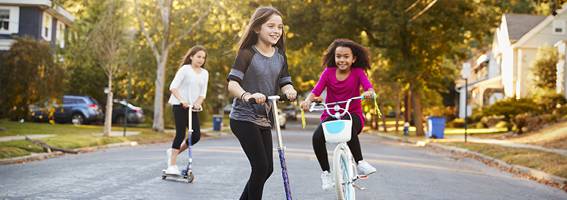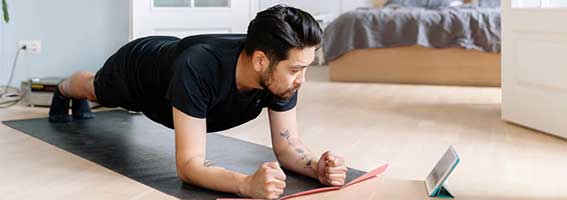
Why staying active is the real teenage dream
Most adolescent girls aren’t meeting recommended exercise guidelines, and many drop sports once puberty hits. Experts share why we should all work to reverse the trend.

5 ways to turn physical activity for teens into a life-long habit
Experts from Quebec’s FitSpirit and Olympic champion Maude Charron share how to encourage physical activity and healthy habits in teenagers.

Good question: Can you prevent heart disease?
Experts from St. Mary’s PREVENT Clinic share what you can do to lower your risk of Canada’s second-deadliest disease

How to incorporate “exercise snacking” into your day
When you hear “snacking,” your mind probably thinks of chips, nuts, fruit, and whatever food you tend to reach for when you get hungry between meals. But there is a new kind of snacking on the menu, and it can positively impact your health—exercise snacking.

Everything you need to know about diabetes and exercise
Along with a healthy diet and (for some people) medication, exercise is one of the main pillars of diabetes management. Find out why!

Over 40? Here's why cycling may be perfect for you
Cycling is a sport that can be enjoyed at almost any age. However, middle age may be the perfect time to start. Read on to learn why.

Functional fitness: How to turn your desk into a gym
With just a few minutes a day, you can start to chip away at your muscle-strengthening activities for the week—all from the comfort of your desk!

Staying active—a family affair
The time you spend getting active with your family doesn’t have to be structured. Instead, it can be spontaneous, fun, and off the cuff. Here are a few tips to get everyone up and moving.

Six science-backed reasons to practice yoga
Grab your yoga mat and explore these six science-backed reasons to practice yoga.

Exercise as medicine for a healthier, longer life
Increased physical activity helps people live longer and in better health. The big question is: how can you get motivated to be active?

Why running is the most effective anti-aging medicine
Find out how running does wonders in improving not only your physical wellbeing, but also your mental wellbeing.

Strategies for fitter kids: Trading screen time for fun exercise
These days, electronic devices are a “normal” part of childhood. So how can parents motivate their kids to get the exercise they need? Here are some strategies to consider.

The immune-boosting power of exercise
There is one healthy habit that may go a long way in boosting your immunity— exercise! Read on to find out why daily exercise is worth the time and effort.

How exercise can help you age gracefully
Advances in medicine and technology mean human beings are living longer than ever before. But are we aging well? These studies show that regular, life-long exercise can result in better health outcomes as we age.

How to walk your way to a healthy heart
Are you looking for an easy entrance into the world of physical activity? Then you’re in luck because walking can be the perfect way for you to get physically active and improve your overall health.

15 fun family fitness ideas that keep you active
Not sure how to get your family moving together? Try out these easy activities.

10 everyday tasks that count as exercise
These everyday activities help you burn calories, without having to go to the gym.

How mountain biking can boost your memory
Mountain biking, both alone and in a group, is a thrilling sport that offers satisfying challenges at every level. Here are 5 top tips to help you prepare for your first race —or your first ride!

6 yoga poses that keep you healthy no matter your age
We asked Nava Dabby, Modo Yoga Teacher & COO of Modo Yoga International, to guide us through a few poses that will help you feel your best in your body—whether you’re 26 or 62!

6 Dynamic stretches you can do at your desk
We all know that regular exercise has immeasurable health benefit. But what if you don’t even have time to leave your desk? These are 6 stretches you can do from the comfort of your work station.

5 ways exercise can help you to live longer
Find out 5 ways exercise can help you live longer – and healthier!

Fun and easy ways to get active
See some fun and easy ways to get your body moving.

How to start a new exercise routine
The benefits to your mental health are just as important as the physical ones, particularly if you’re in isolation or under a lot of stress.

5 steps to heart health
To help you get wise about your health and your wellness, here are 5 simple strategies for avoiding heart disease.

Looking up
Most of us spend a lot of time looking at a screen which can strain our eyes and lead to Computer Vision Syndrome. There are simple tips for preventing it.

School of hard Knox
Sandi Knox describes how she turned a traumatic attack into a triumph of fitness: from taking self-defence classes to becoming a fitness mentor.
